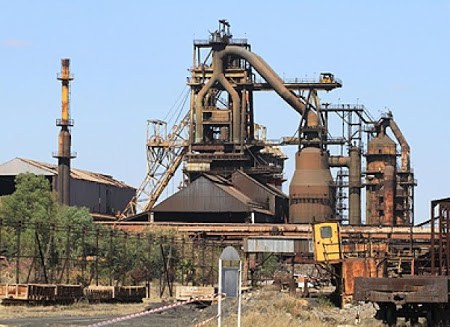
The role of steel sector to the industrialisation of a country cannot be overemphasised. The industrial revolution experienced by western nations was largely propelled by the steel sector. There would have been no railway, cars, and heavy machineries without the steel sector. It is at the heart of the industrialisation of any economy. In recognition of this reality, in 1971, decree 19 by the then military government led to the establishment of the Nigerian Steel Development Authority (NSDA), which was designed to facilitate the development of the Nigerian steel industry. By September 1979, the government dissolved NSDA through decree No. 60 and the Ajaokuta Steel Company Limited, ASCL was created; ASCL was meant to have the Ajaokuta Integrated Steel complex as its Metallurgical Process Plant together with Engineering Complex and other facilities. The complex was designed to serve as the generating plant for vital upstream and downstream industrial and economic activities that are crucial to the diversification of the Nigerian economy. The centrality of the Ajaokuta Steel Plant to Nigeria’s industrialisation is why it was referred to as the “Bedrock of Nigeria’s Industrialization.”
After years of planning and bid submissions by various companies from diverse countries, the Nigerian government in 1980 commenced the construction of the plant. President Shehu Shagari laid the foundation stone for an integrated steel plant in Ajaokuta on 24,000 hectares amidst high expectations. The steel plant is so big that it is said that the coke oven and bye products section alone is bigger than all the four refineries in Nigeria put together. It is believed that the upstream and downstream industries that will evolve all over the nation from the commissioning of the first phase of the project will engage not less than 500,000 employees. The first phase of the plant was intended to produce 1.3 million tonnes of liquid steel per annum, with an installed capability to grow production to 2.6 million and 5.2 million tonnes of flat iron and steel products in phase two and phase three respectively. By 1994, the project had reached 98% completion but has failed to produce steel 24 years after. Between 2003 and 2004, the administration of President Olusegun Obasanjo attempted to concession the plant with little or no success. It was firstly conceded to Messrs SOLGAS ENERGY of USA on 10-year tenure before the agreement was terminated in 2004. The government later conceded it to the Global Infrastructure Nigeria Limited (GINL) before the contract was revoked by President Umaru Yaradua in 2008. At the senate probe into the activities of Bureau for Public Enterprises, BPE in 2011, it was alleged that President Olusegun Obasanjo singlehandedly approved the concession of the Ajaokuta Steel Complex to Global Infrastructure Limited against due process.
The then Minister of Mines and Steel Development, Architect Mohammed Musa Sada also disclosed that the federal government was spending 300 million naira monthly and N3.6 billion annually on the wages of workers of the waning Steel Complex. Our country was essentially doling out billions of Naira for a company that produced absolutely nothing. This revelation was made in 2011 and seven years later the situation has remained the same. Interestingly, the same complex was allocated N6.2 billion by the Federal Ministry of Mining and Steel Development in the 2017 budget. What is clear is that the steel plan that was designed to be the industrial bedrock of the nation has been a draining pipe for the nation. The House of Representatives recently halted another move for the privatisation of the complex in order to conduct a comprehensive probe into the thorny issues surrounding the process.
We commend the resolve of House of Representatives to unravel the mysteries surrounding the concession and privatisation of the complex. However, what is more important to Nigerians is to see a steel company that fulfils its purpose and leading the industrialisation of the Nigerian economy. This is why it is important for us to join hands to revive it and restore this magnificent project to its intended purpose. As the lawmakers are poised to begin a public hearing on the project, we look forward to a completion of the process and one that will eventually result in the resuscitation of the steel complex. We hope that this will not end up as another jamboree with media sensations without lasting economic benefits. Many other steel plants in the world that commenced about the time Ajaokuta Steel Complex was conceived have become major engine of industrialisation for their respective economies. We cannot afford to throw away this opportunity to turn around the current situation in our steel sector. Industrialisation cannot be driven without a functional steel sector; we are naturally blessed with all the resources required to have a booming steel sector. Ajaokuta steel complex is a vehicle that must be resuscitated at all cost.
Copyright Ships & Ports Ltd. Permission to use quotations from this article is granted subject to appropriate credit given to www.shipsandports.com.ng as the source.
